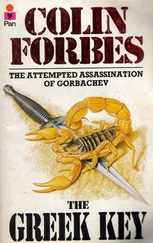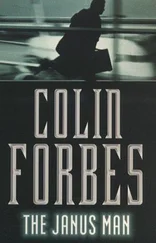‘Now you’ve all read the preliminary STA survey report on Negrav. When we get within telescope range, we’ll be able to supplement what we know with our own observations. I hope to be able to discover a few items which the STA observers haven’t mentioned because they weren’t looking specifically for them. It’s highly unlikely that Negrav is totally composed of nickel-iron alloy, or that its entire surface is as smooth and unbroken as the STA report suggests. Initially we’ll need to establish a foothold, and this’ll have to be well below the orbital path of the black hole, so what we want particularly is a deep fissure or crack which we can hook into and work safely below the black hole’s grazing orbit.’
‘Check!’ said Jim Fanning, the UE geologist. ‘But if the STA photographs are to be believed, you’d stand more chance of hatching ball-bearings than you do of finding fissures in the surface of Negrav.’
‘I’m aware of that,’ said Fritz. ‘The theory’s that Negrav was once a full-sized planet, and all we see now is a remnant of the core. The rest of it’s been eaten by that darned black hole. But I’m hoping at least for a blowhole or some form of depression. The frequency with which the black hole sweeps the surface gives us less than thirty-six hours between touching the surface and getting safely tucked down underground out of its way.’
‘If I judge you right,’ said Jacko, ‘you’re thinking of building the observatory beneath the surface?’
‘We obviously can’t build on the surface, because anything there gets eaten by the black hole. Besides which, it makes sense in other ways. Below the surface you don’t have to bring in construction materials. You simply carve out the shape of cavity you want. Also you can make use of the negative gravity, because the centrifugal force’ll drift you towards the roof of the cavity, thus producing a semblance of positive gravity. Once the observers get used to making their observations by peering down through windows below their feet, it should be a fairly effective working situation.’
‘All of which sounds very nice,’ said Fanning. ‘But I foresee a couple of practical snags. Like how do we get in deep enough quick enough to avoid being eaten by the black hole? And having got into the surface, how do we carve an observatory-sized cavity in what promises to be a very strong nickel-iron alloy?’
‘I admit it may be tough,’ said Van Noon.
‘Tough!’ Fanning was aghast. ‘Blasting won’t do much more than deform the surface, and oxy-acetylene cutting would take a lifetime—assuming you could get the supplies. So you’re largely back to processes like laser drills and the occasional hand file. At a rough guess, Colonel Belling was damned right when he said it couldn’t be done.’
‘I’ve told you all before,’ said Van Noon sternly. ‘Physical limitations aren’t absolutes. They’re a state of mind. They said iron ships wouldn’t float. They reached that conclusion because they hadn’t taken all the facts into account. From this distance I can’t see the answer to the Negrav problem either. But I’m sure as hell there is one: All we have to do is find it.’
Once they were orbit around Negrav subsequent observations did nothing to support Van Noon’s optimism. Negrav was a ball of solid nickel iron, and its surface was flawless and honed to a micro-finish which would have done credit to a precision ball-bearing. Because of its small size, the black hole remained invisible. Its relentless orbit around Negrav—or rather the orbit of the asteroid around it, which came to the same thing relatively speaking—had for some millions of years ceased to take more than microns of further material from the surface.
Now the black hole’s path hovered millimetres above the surface of Negrav and pursued a progressive rotation which effectively swept the entire sphere over a period of thirty-six hours. The position of the black hole was known with mathematical certainty at any time, but libration and other effects of the binary on the orbit of Negrav introduced an uncertainty factor. The black hole’s progress across the surface had to be described in terms of statistical paths rather than positional lines. In practice this meant that thirty-six hours was the longest period any point on the surface of Negrav could be guaranteed safe from the marauding black hole.
‘Which isn’t long enough,’ said Jacko Hine. ‘Working under space conditions and negative gravity, we wouldn’t have time to cut far enough into the surface to be any significant use. We’ve not only got to get into the hole, but around some considerable corner to prevent being drawn out by the black hole’s gravity.’
‘How far d’you estimate we could penetrate in thirty-six hours?’ asked Van Noon.
‘Judging by spectro-analysis of the surface material, we’d be hard-put to remove more than a cubic metre with the tools available. And once we get deeper, the work would slow considerably because we could only keep one man at the face.’
‘That’s not good enough,’ said Van Noon. ‘I’m going down to Negrav myself to study the problem from the surface.’
‘If it’s not a rude question, how do you intend to hold to the unbroken surface against negative gravity? Chewing gum?’
‘No, permanent magnets. Nickel iron of that structure ought to be highly magnetic. If the negative gravity’s only point seven I should get all the attraction I need from a fairly small magnet pack.’
‘It’ll be a right game if you end up orbiting the black hole as well!’
If he was being strictly honest, even Van Noon would have admitted his confidence had fled as the little scudder dropped him towards Negrav’s implacable surface. The nearer they approached, the more smooth and polished the asteroid’s surface appeared, until from twenty metres up he could see the perfect reflection of the scudder mirrored in the giant metal ball.
The first problem was to secure a contact with the surface. Whilst the power manoeuvrings of the scudder could keep station over a particular point on the asteroid, the problem of trying to attach an assembled magnet package to the surface was akin to trying to throw it twenty metres vertically above his head. It was not until he had experienced the situation that he began to appreciate the reasonings behind Jacko’s pessimism. What he had failed to accept subconsciously was that any work in negative gravity was akin to working on the ceiling, and that any drilling would have to take place in a “hands down, feet out” position, which was both unnerving and extremely tiring.
Jacko’s estimate of a cubic metre of material removed in thirty-six hours began to look wildly optimistic.
After a series of hair-raising manoeuvres by the scudder, the pilot managed to bring Van Noon within striking distance of the nickel-iron “ceiling”. After a few breathless moments, the magnet package stuck and the long cable trailed outwards with Fritz swinging uncertainly on the end of it. Thereafter he had to climb up the cable to reach his destination, which was no mean feat despite the lightweight flexibility of his spacesuit. This did not accord at all with his ideas on how a conquering hero, even an unorthodox one, should reach the planetary body of his choice.
Having secured himself on the cable, he then began to probe the surface above him. A small drill bit cleanly but slowly into the metal surface, though he was afraid to exert too much pressure lest he should lever away the magnets which held him there. He dutifully collected samples of the swarf which came away, tapped the hole, and screwed in a prepared eyebolt to which he attached a second line. More secure now, he brought up a large drill and drilled a hole sufficiently large for a second eyebolt to be inserted completely recessed below the surface.
Читать дальше












